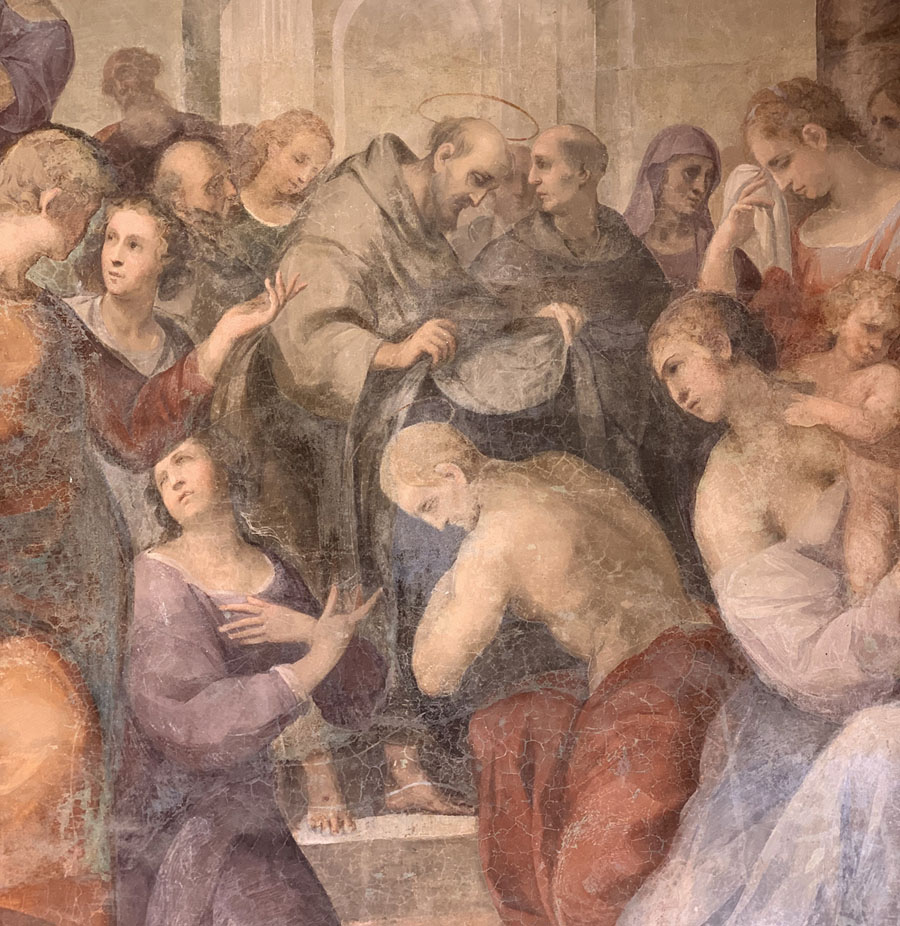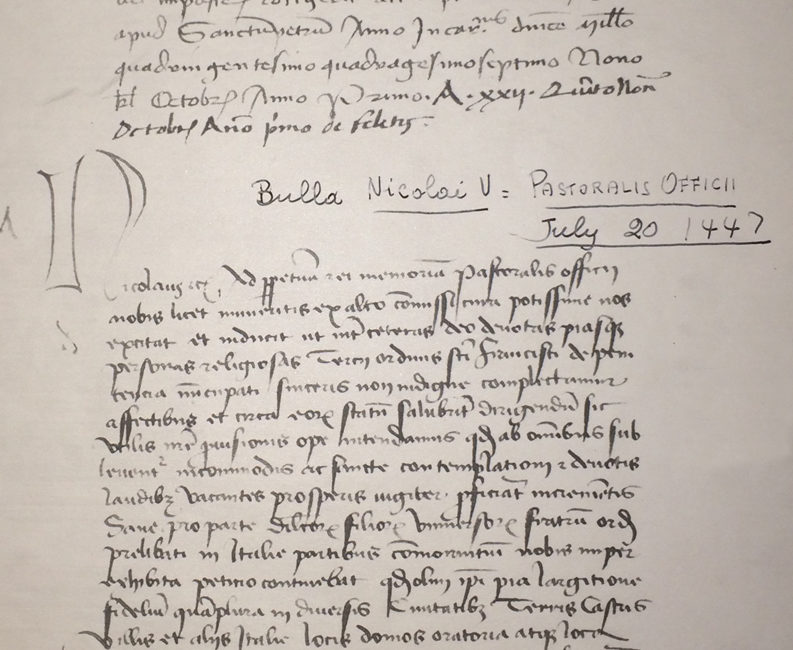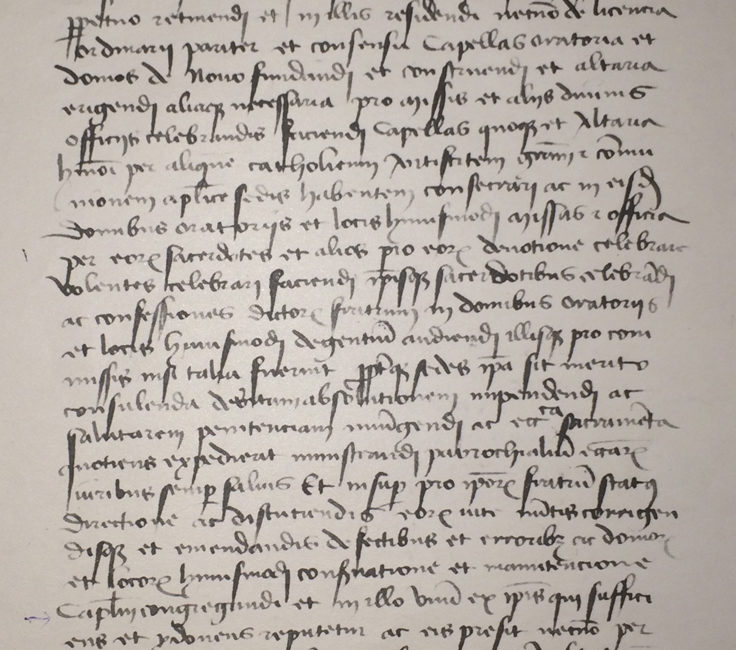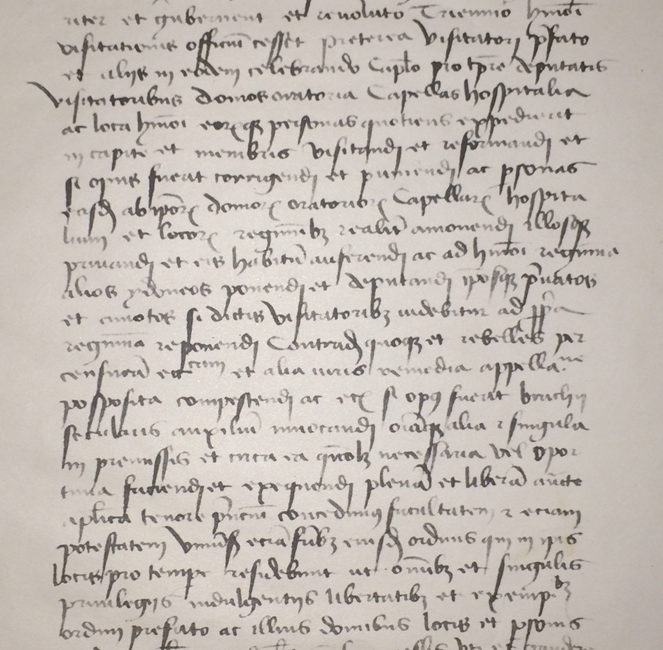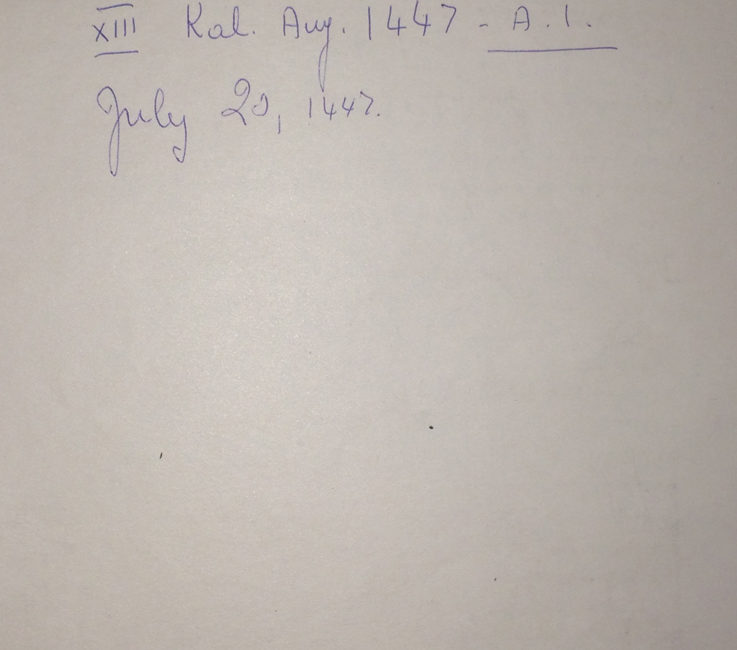Francis the evangelist
Saint Francis of Assisi and his first companions were inspired by the Holy Spirit to live the Gospel as a fraternity and, following the example of Jesus and his apostles, they travelled through the towns and cities of Italy preaching the holy Gospel and challenging the people to live a Christian life more in keeping with the message of salvation. Many people were moved by the living testimony of Francis, the “Poverello” (the Little Poor Man), and wanted to follow him and his teachings. They wanted to live as he did and to be more faithful to Christ and to the word of life in the Gospels.
Popular enthusiasm and followers
Francis welcomed everyone as a gift from God. The men who followed him became the “lesser brothers,” the Friars Minor – or the First Order, and embraced a life of poverty and itinerant preaching. Clare of Assisi and many young ladies, who became known as the “poor ladies,” the Poor Clares – or the Second Order, joyfully entered into life of contemplation in the cloister. Francis also inspired many men and women who did not enter into religious life. They remained “in the world,” in their own houses and strived to live a Gospel-centered life in their secular state. This movement became the Franciscan Order of Penance or the Third Order of St. Francis.
Origins of the Third Order
The movement that would become the Third Order finds its roots in the autumn of 1211 and expanded during the spring of 1212. It enjoyed a prodigious growth both geographically and numerically over the next ten years. The “form of life” that Francis offered his followers was based on Gospel principals and encouraged the men and women of the Third Order to follow an evangelical way of life. This can be seen very clearly in two precious documents he addressed to the tertiaries: The Early Exhortation to the Brothers and Sisters of Penance (c. 1215) and the Later Exhortation to the Brothers and Sisters of Penance (c. 1221). Ecclesial approval for the movement came from Cardinal Hugolino, the Cardinal Protector of the Franciscan Order and future Pope Gregory IX, when he presented the “Memoriale Propositi,” the first “rule,” to the Third Order in 1221. In 1289 the first Franciscan pope, Pope Nicholas IV, wanted to support and encourage the growth of the Third Order of St. Francis by connecting it more closely with the spirituality of its founder and the rest of the Franciscan family. He gave explicit papal approval to the Order of Penance, which had already been commended by many popes, and issued a new rule, “Supra Montem,” in 1289 which expanded the juridical nature of “Memoriale Propositi.” The Franciscan penitents who remained in their homes (both single or married) constituted the Third Order Secular (or TOS), which, since 1978, is known as the the Order of Secular Franciscans (OFS)..
Towards a more perfect life
Not to be forgotten is the fact that, at the same time, a particular phenomenon was developing. From the time of St. Francis onwards there were some tertiaries, both men and women, who manifested a desire for a greater commitment towards a life of Christian perfection. They began to live together in small communities in order to perform works of mercy in their towns and communes. In time many of these groups decided to profess the evangelical counsels – the vows of poverty, chastity and obedience – under the authority of local bishops. Some of the tertiaries showed a preference for the contemplative life, which they expressed by living in hermitages or in voluntary seclusion far from earthly distractions. Their hearts were focused entirely on the mystery of God and their love for Him. Many continued to help in hospitals and in caring for the sick and aged while living together in community. Some provided shelter for pilgrims or other travelers. Others established reception centers for homeless women and schools for the education of young people. Soon some of the friars began working in parishes and in the ministries of teaching, preaching, and catechesis. Some even produced scientific and religious publications. Later a commitment to missionary work arose and developed with great intensity and is still a hallmark of the Order today. The fraternities of tertiary regulars, which had been founded spontaneously all over Italy, increased in number and diffusion during the 14th Century.
Approval
The devotion to the common life in community has been demonstrated over the centuries by numerous congregations of monks and nuns. This is the same in the Third Order. Towards the end of the 13th century the tertiary regulars had many friaries and communities in various towns and cities in Italy. On July 11, 1295, Pope Boniface VIII promulgated the bull “Cupientes Cultum” which granted to the tertiary Regulars the right to have a proper place for worship. In so doing he approved the communal life of the tertiaries and the pastoral ministries that they offered to the people. The members of the male branch of the Franciscan tertiaries, who had embraced a form of “regular” religious life, became known as the Third Order Regular (TOR) and dates back to the time of St. Francis of Assisi. Pope John XXII gave papal approbation of this movement in the bull “Altissimo in divinis,” dated November 18, 1323, in which he praised the fraternal life that a small community of tertiary Franciscans were living near Spoleto and declared that it was in accordance with the intentions of Saint Francis and the dictates of Supra Montem.
Centralization and organization
By means of the bull Pastoralis officii Pope Nicholas V approved the union of a number of fraternities of male Franciscan tertiaries on July 20, 1447, and established it as an independent Order under one minister general and council. The Order continued to grow in Italy and rapidly expanded to 15 Provinces with a total of 256 friaries with about 2000 friars. The Italian expression of the Third Order Regular has existed without interruption from the time of St. Francis of Assisi to this day. Several other countries in Europe experienced a similar development of the TOR life. Unfortunately, as a result of various civil and religious suppressions over the years, many of these fraternities have disappeared. Others have united with the Italian provinces in one single entity which constitutes the modern expression of the Regular Third Order of Saint Francis. Today, the Third Order Regular is present in 17 countries: Italy, Croatia, Spain, France, Germany, Austria, USA, India, Sri Lanka, South Africa, Brazil, Paraguay, Mexico, Peru, Sweden, Bangladesh and the Philippines.
Pastoralis officii
In the world today
As part of his attempt to reform religious life Pope Innocent X closed all the friaries and monasteries that had with fewer than six members. Many of the TOR fraternities were closed during this time because they were predominantly eremitic, small and poor. This was a devastating blow to an order that was predominately eremitic in nature. Added to this were the continuing difficulties and divisions within the Franciscan family itself and the repeated civil suppressions which rained down upon the already substantially weakened order. Even in the midst of these difficulties the Order has been blessed by the Lord and has not only survived but has grown and expanded over the last 110 years. Today the Order has over 208 friaries around the world and over 800 friars. Even with this long and interesting history some still ask: “But who founded the Third Order founded and when?” Along with the other members of the Franciscan family we can proudly answer: “The Order was founded by St. Francis of Assisi himself shortly after he received permission from Pope Innocent III to live and to preach penance.”
Apostolic activity
The various apostolates ministered by the Regular Third Order are many: pastoral care within parishes, works of mercy for the needy, schools for the young, teaching, preaching, and missionary work. But the main apostolic aim is to live the gift of a consecrated life as a continual offering upon the altar of the world for the glory of God and the salvation of our fellow men and women. The traditional spirituality of the Third Order Regular derives from the Franciscan penitential movement and can be synthesized in the following theoretical-practical definition: the members of this Order are to embrace a life of constant conversion to the living God and to perform works of mercy according to the needs of the Church and of the faithful people of God. For this reason the specification “de poenitentia” (of penance) is often added to the name of the Order.

